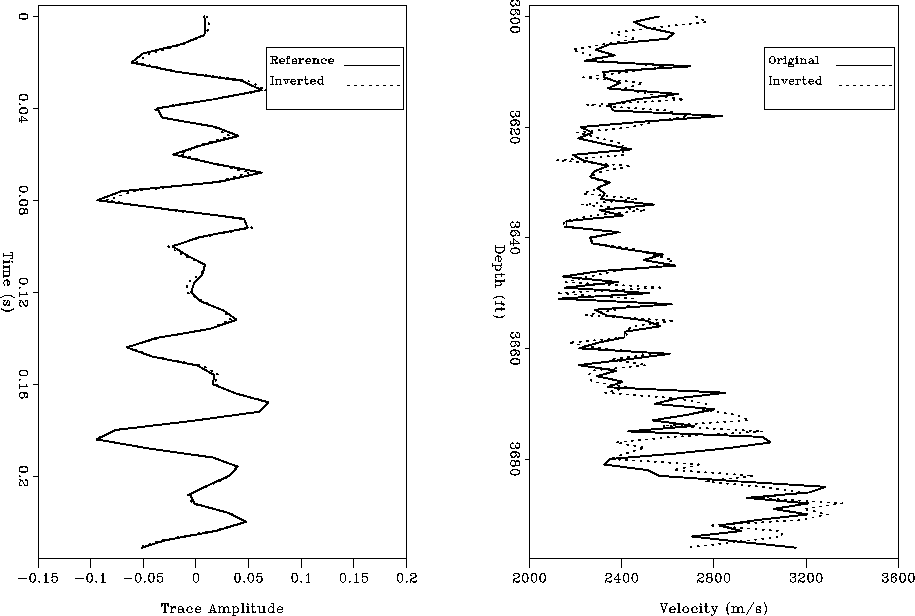




Next: Conclusions and Future Work
Up: Inversion with the Velocity-depth
Previous: Inversion with the Velocity-depth
I just showed that the inclusion of
the velocity-depth trend increased significantly the match between the original
and the inverted sonic log. The question now is: Why didn't we get an even better
match in the sonic logs? An obvious explanation is that the sonic log in this case
was sub-sampled to 10 feet which is still a very thin interval when it comes to
the depth resolution that we can achieve with typical seismic data. In order
to get a better match we would need higher frequencies, so
there is always a limit in the quality of the match that we can reasonably expect
to obtain in the inversion of the sonic log. To illustrate this point,
Figure 5 shows the same comparison as in
the bottom panles of Figure 4 except that the peak
frequency of the
Ricker wavelet was halved. Clearly, the lack of high frequencies have a very
detrimental effect in the quality of the match of the sonic logs. See in
particular the depth intervals between about 300-400 ft, 450-550 ft and
700-800 ft.
L2_inv_trend_low_freq
Figure 5 Comparison of reference and
matched trace (left panel) and of original and inverted log using the
L2 norm when the velocity-depth trend was taken into account and the
peak frequency of the Ricker wavelet was halved.





It should also be noted that the example here is not very realistic because I used
the exact same approach to compute the seismic data to be matched and
to compute the trial solutions. In a real situation the reference trace will
be obtained from a real seismic survey whereas the trial solutions will still
be computed with a procedure similar to the one used here (perhaps improved by
allowing random noise or multiples or attenuation). Therefore, there will be
reasons other than the velocity-depth trend or the frequency content of the data
that will play a role. The estimation of the seismic wavelet, for example, is
well-recognized as a very important issue when inverting for real data.





Next: Conclusions and Future Work
Up: Inversion with the Velocity-depth
Previous: Inversion with the Velocity-depth
Stanford Exploration Project
11/11/2002

